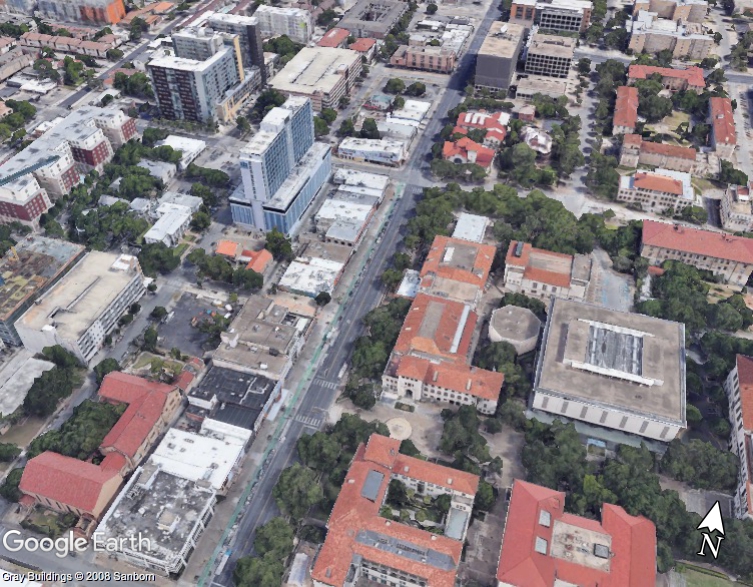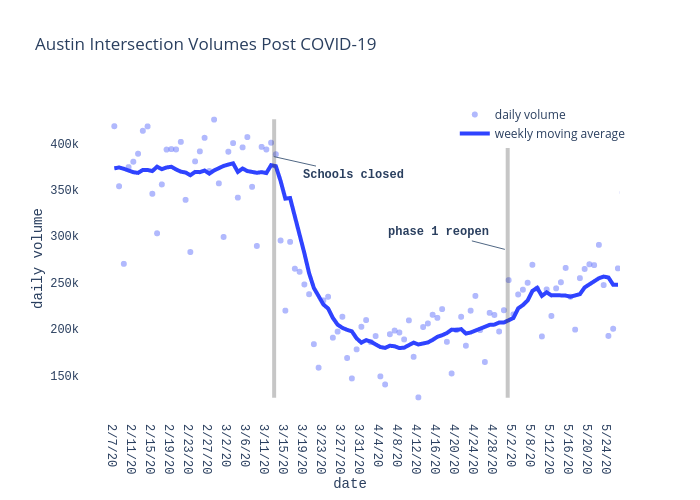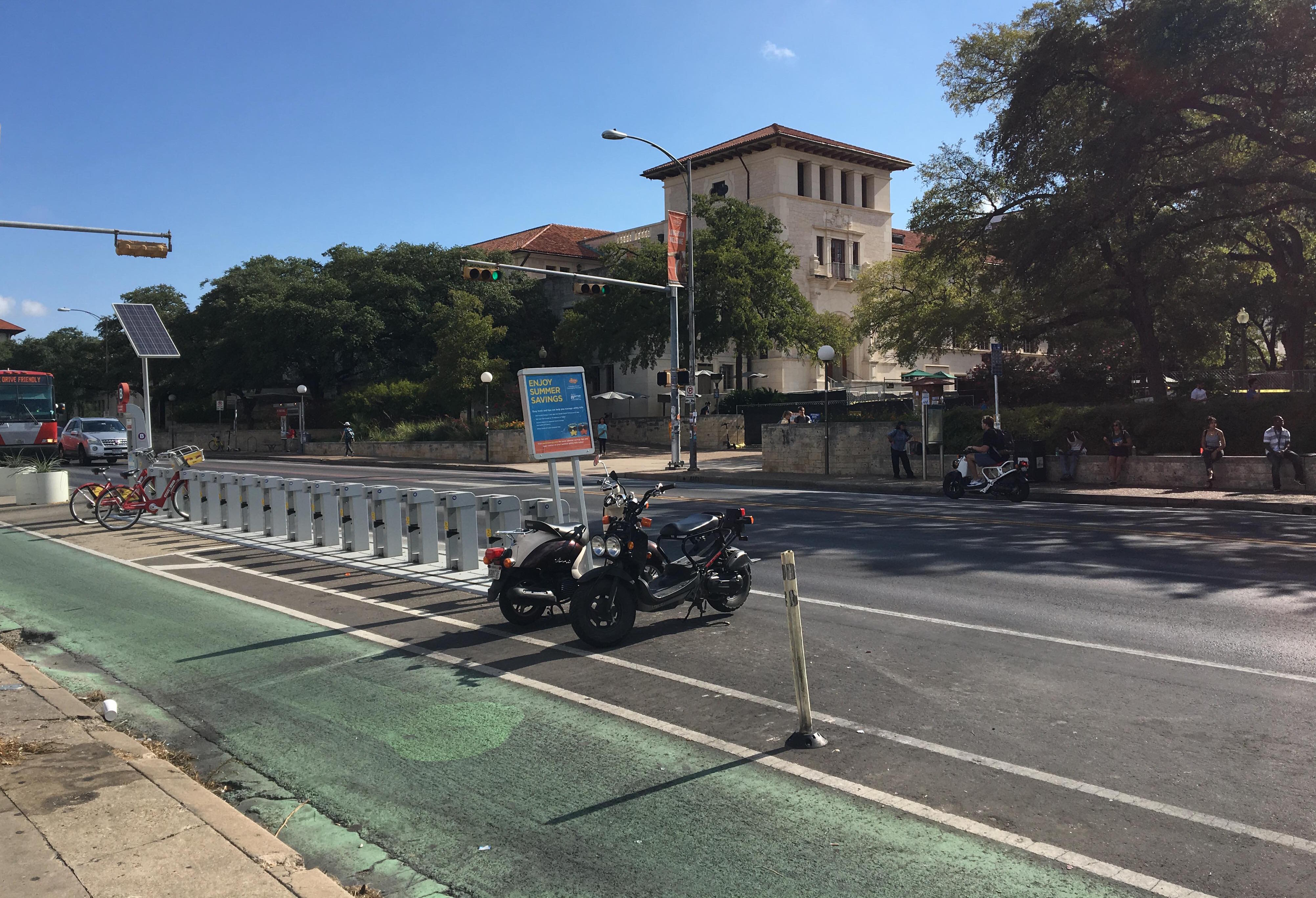Signal Timing Observations From a Jaywalker
How can we time signals to account for all modes of transportation?
Jaywalking is generally against the law wherever you live. It is also dangerous and you should cross streets only at marked crosswalks.
The Mid-Block Crossings

Guadalupe street is a 4 lane arterial that also serves as the dividing line between the University of Texas and student neighborhoods in West Campus. I live here, and I frequently walk along the scorching sidewalks on my way to class. During my last semester when I would walk to my 9AM classes, I noticed that many pedestrians did not wait at the traffic signals to cross the street. Many simply walked along the sidewalks and waited for the gap in traffic to cross the street. Some might call this time saving act jaywalking.
However, I noticed that the signal timing along Guadalupe (from 21st to Dean Keaton) seemed to be perfect for jaywalkers. Gaps in traffic would form and pedestrians could cross the street in a comfortable period of time.
The gaps where no vehicles are traveling down Guadalupe form for a number of reasons:
- The leading pedestrian phase for crossings of Guadalupe, which lasts for roughly 8 seconds, shows red in all directions and allows pedestrians to occupy the crosswalk before turning traffic begins. This protects pedestrians in the crosswalk and also prevents vehicles from turning down Guadalupe when the turning traffic has the green light. This is consistent at the Dean Keaton, 24th, 22nd and 21st intersections.
- Most side streets cannot turn right on red which also includes the leading pedestrian phase as mentioned earlier.
- In the morning, the traffic generally clears the signals and few queues develop traveling north or south. This leaves only a few cars and buses waiting mid-block.
However, in the PM peak period the traffic queues up at the signals and no more gaps form for pedestrians to cross mid-block.
The time to cross the street, parked vehicles, and the lack of curb cuts along the entire length of sidewalk generally prevents those who have mobility impairments from crossing mid-block using my observed method.
According to the Guadalupe street corridor plan commissioned by the City of Austin, the pedestrian volumes at the 24th street intersection greatly outnumber car volumes traveling east or west during both the PM and AM peak.
The leading pedestrian phase helps pedestrians cross Guadalupe safely, and it should be recognized. We should also recognize that this safety improvement protects those in the crosswalk and those choosing not to use it.
 Volumes at Guadalupe and 24th st from the Guadalupe Street Corridor and West Campus Development Report
Volumes at Guadalupe and 24th st from the Guadalupe Street Corridor and West Campus Development Report
How do We Measure Signal Re-Timing?
Signal timing for pedestrian progression is usually not considered when engineers decide to time a corridor. Many authorities use a simple level of service metric to determine how best to time signals. This level of service only considers vehicle delay and doesn’t consider pedestrian, transit, or cyclist delay. Cities, like Austin, report improvements in travel time for cars only when engineers re-time signals. This travel time usually only considers the corridor as a whole, and this metric can actually incentivize increases in travel times for side streets, pedestrians, and transit.
The signals along Guadalupe have a cycle length of roughly 2 minutes. The “walk” phase at the signals is roughly 8-10 seconds followed by a longer flashing “no-walk” phase. This means the longest a pedestrian will wait to cross the street could be 1 minute and 50 seconds. My walk from my apartment to my classrooms is on average 15 minutes or so. A delay of 2 minutes just to cross the street would increase my commute time to class by 13%.
I don’t believe a 13% variability on travel time is unreasonable, nor do I believe a 120 second cycle length is too long. I do believe we should measure and account for pedestrian delay at our intersections. We should reward our cities for decreasing delay or travel time for all users of a street.
The reduction in delay and increase in safety for pedestrians due to the leading pedestrian phase is currently not being accounted for in a corridor travel time based metric.

The Future
As changes to Guadalupe begin to move ahead, we should think about how we will measure the impacts. Is a successful project one that empathizes “person throughput” or one that will continue to measure the movement of cars?
This stretch of Guadalupe is a unique challenge, and we should allow our city’s agencies to innovate new solutions.
Charlie